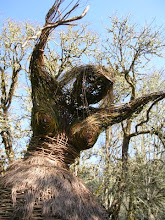
Right before Christmas I was zooming through a new bookstore looking for a particular gift book, and as I passed the end of a gondola my gaze fell on this: Tracy Chevalier’s Remarkable Creatures. The cover is attractive and the title provocative, and when I flipped the book over and read that it was a novel about Mary Anning it went directly into my shopping basket.
What could be better than a novel based on one of the 19th Century’s most significant fossil hunters? Mary Anning was an uneducated working-class woman in a culture where social stature, breeding, and education were part of a severe caste system. All of which mitigated against her receiving the kind of acknowledgement and acclaim that her discoveries deserved. She discovered the plesiosaurus, the ichthyosaurus, and other fossils that turned early 19th-Century assumptions inside out. (Not only did she find the fossils, she recognized them as being different from any living creatures, or previously-discovered fossils.) This was an era when the Church of England was still steadfastly sticking to Bishop Ussher’s proclamations that the world was created in 4004 BC. These fossils, and others like them, led British scientists to examine the concepts of evolution and the great geological history of Earth.
A middle-class spinster - Elizabeth Philpot, who was farmed out with two of her sisters to live in Lyme Regis when their brother inherited the family property and married - developed an interest in fish fossils and became Mary’s fossil-hunting partner and her champion to the scientific community. Mary’s talent for discovering specimens in the fossil-rich cliffs and outcroppings along the Lyme Regis beaches drew many scientists and amateurs to her, without attracting the recognition she richly deserved. A number of recent biographies have helped to rectify this lack of acknowledgement.
Chevalier’s novel captures these characters and richly evokes the atmosphere and muted excitement of the fossil beds, and of the town of Lyme Regis. Needless to say this novel would make an interesting movie, as did the author’s Girl With a Pearl Earring.

NOTE: the fossils shown are just a few of my own collection, and not intended to represent Lyme Regis material.




2 comments:
Thanks. I'll look for it.
I have already placed my copy into my natural history sections, where I tend to accumulate books on 19th Century women naturalists in a somewhat random way.
Post a Comment